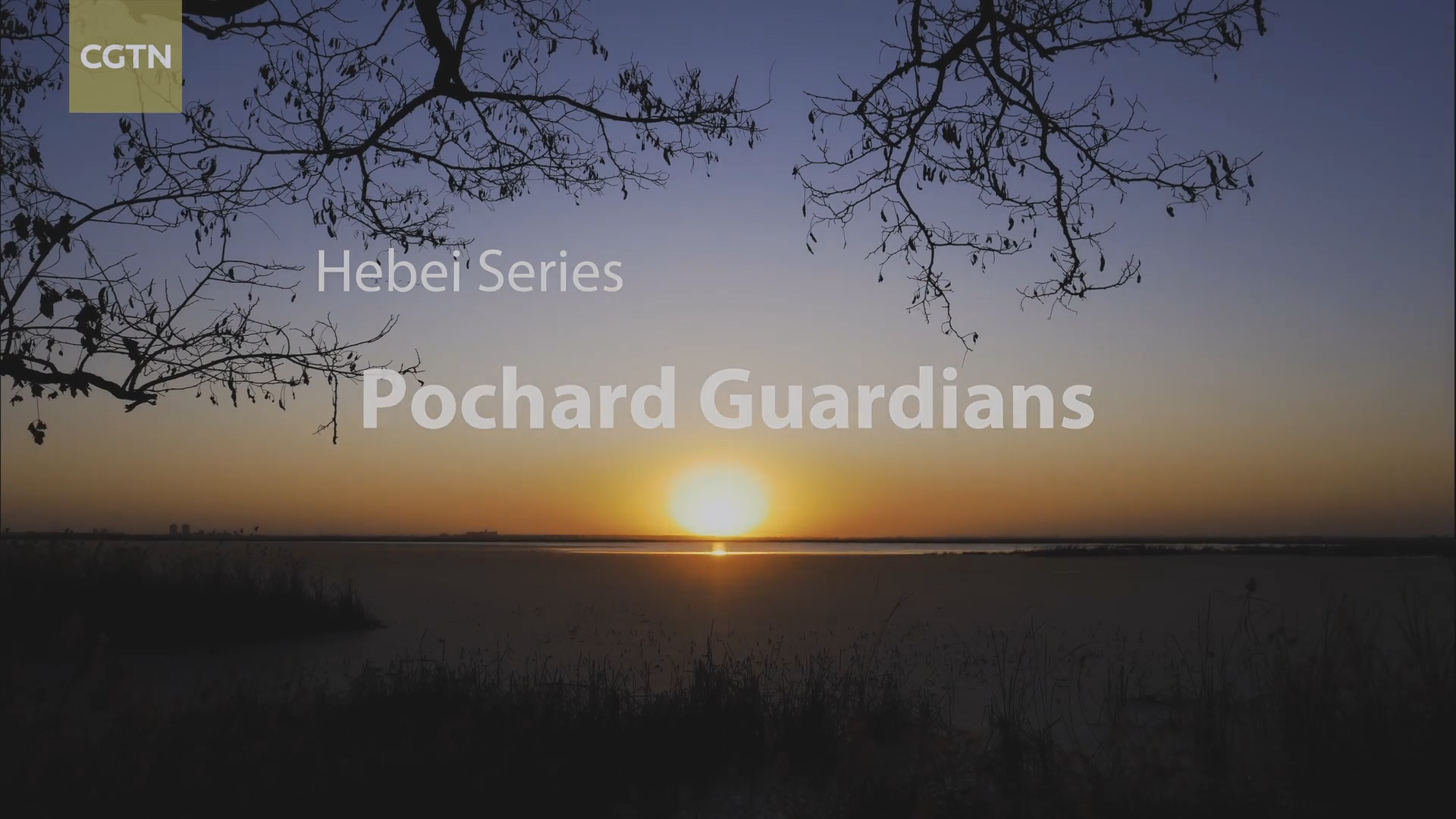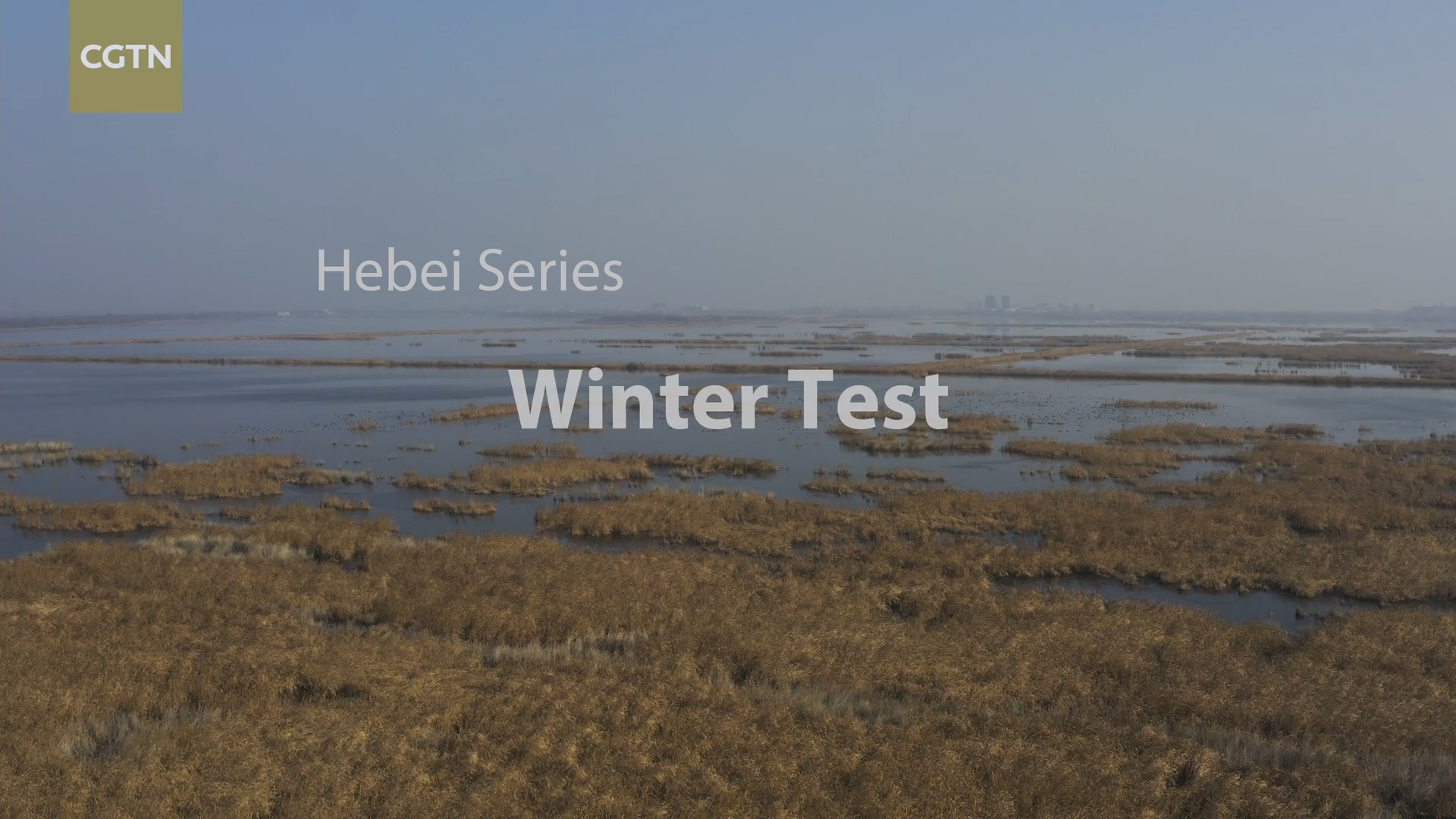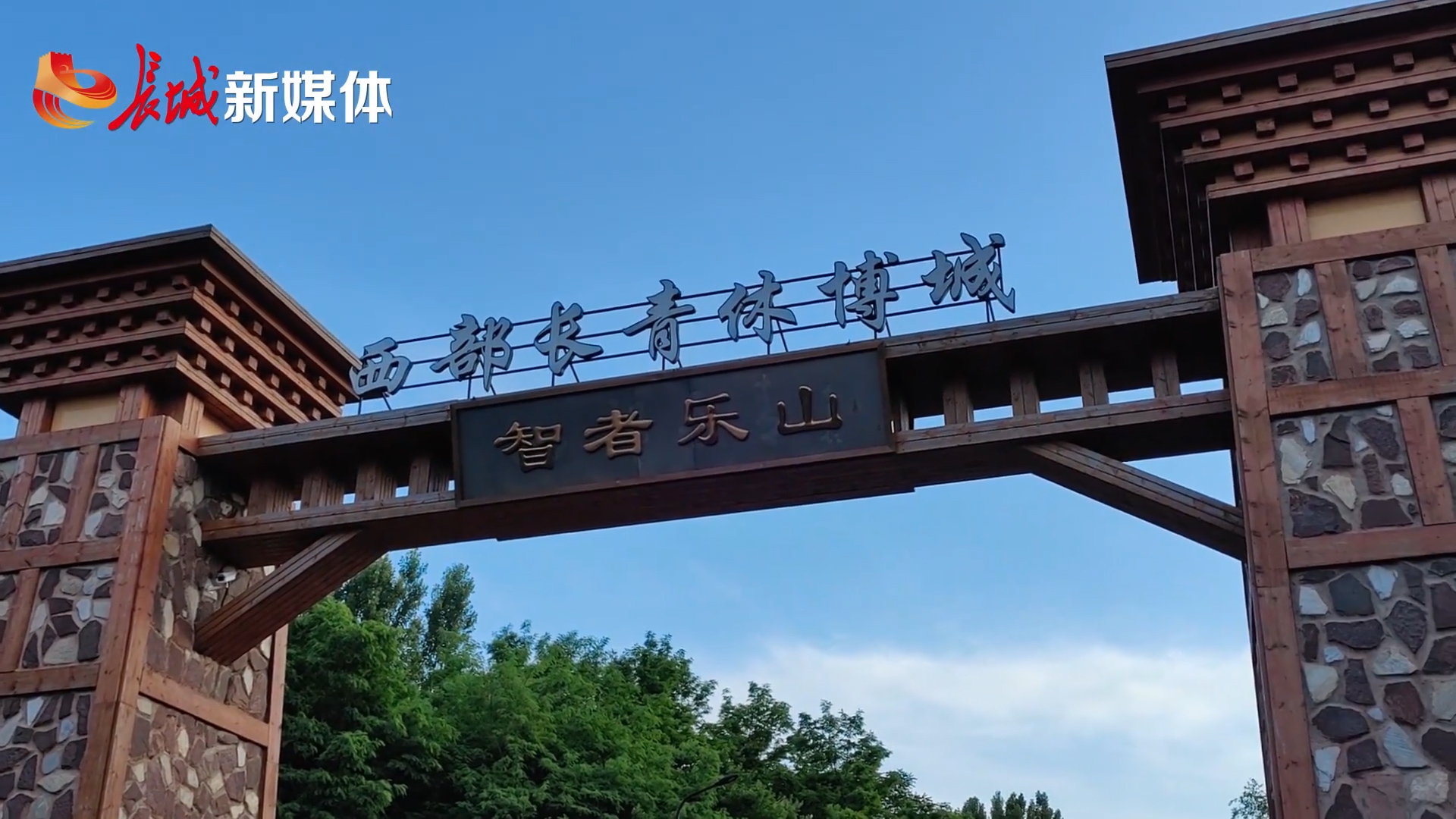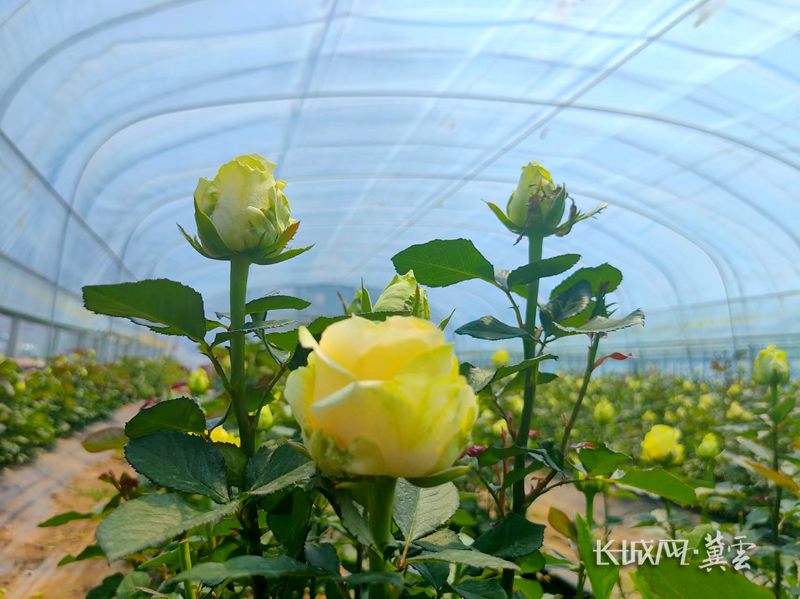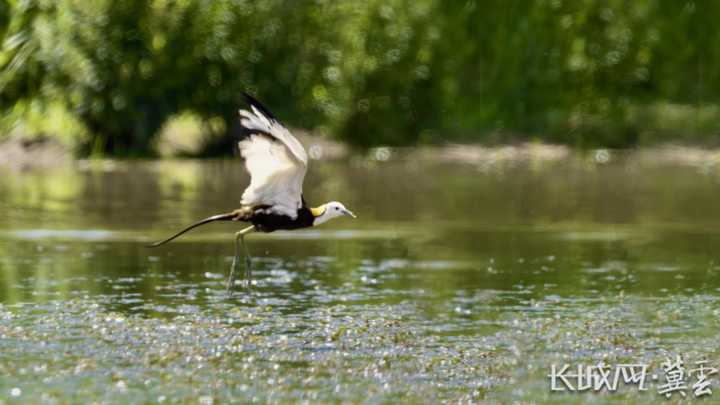仲秋时节,河北唐山祥云湾海天一色、海鸥翔集。傍晚时分,渔船靠岸,渔获交易,码头上顿时热闹起来。
It was a mid-Autumn day. Flocks of seagulls were swarming the beautiful sea-view Xiangyun Bay, Tangshan, Hebei Province. Late in the afternoon, the fishing port burst into a seething fish and seafood market as fishing boats have returned and pulled onto the shore, bringing back their catches.
“今天出海一天,打到了1000多斤八带鱼。曾经多年不见的海鳝鱼、海鲈鱼、燕鱼、牙鲆鱼、带鱼,现在已经屡见不鲜。”冀乐渔03456号船长王立有憨憨一乐:“这要放在五六年前,想都不敢想。”
“I've netted more than 500 kg of octopus today. It is not rare to see sea eel, sea bass, batfish, flounder and hairtail that had been unseen for years,”said captain of Jileyu-03456 Wang Liyou, with a broad smile.“This was unimaginable five or six years ago.”
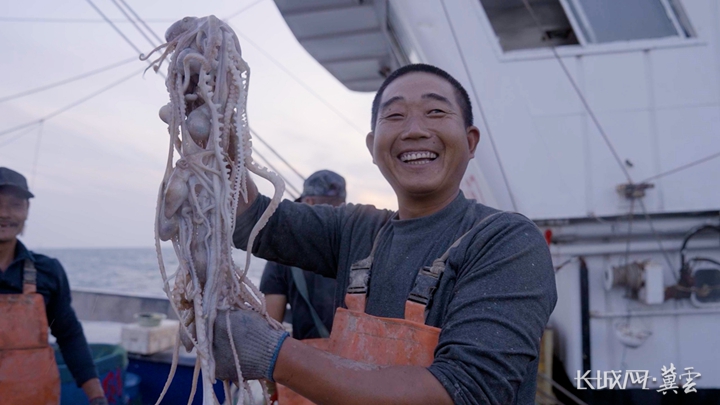
开渔期,河北唐山祥云湾近百艘渔船满载而归,渔民们享受着丰收的喜悦。长城网·冀云客户端记者 贺宏伟
During the fishing period, nearly 100 fishing boats go out fishing and return to the Xiangyun Bay every day, fully loaded with their catches. Fishermen are enjoying their good harvest. (Photo by He Hongwei/Great Wall New Media)
渔获的增多,还要从海草“归来”的故事说起。
To know why the sea catches have increased, we have to go back to the story about the "return of seagrass".
在唐山海洋牧场实业有限公司董事长张振海的记忆中,祥云湾这片海域属于渤海四大渔场之一的滦河口渔场,20世纪80年代以前,海里遍布着海草床、贝藻礁等典型近海生态系统。后来随着近海养殖、过度捕捞、工业排污等原因,海草床大面积退化,海底植被逐渐荒漠化,导致鳎目鱼、黄花鱼、带鱼等这些本来渤海常见的鱼类越来越少,几近绝迹。
According to Zhang Zhenhai, Board Chairman of the Tangshan Aquafarm Industrial Co. Ltd., the sea off the Xiangyun Bay used to belong to the Luohekou Fishing Ground, one of the four major fishing grounds on the Bohai Sea. Before the 1980s, there used to have a complete typical offshore marine ecosystem, with seagrass beds and algal reefs growing everywhere.
But due to offshore breeding, over-catching and industrial pollution, the seagrass beds began to deteriorate, the seabed vegetation began to be decertified and such common fish species as tonguefish, yellow croaker, hairtail were rarely seen, almost extinct.
“海洋要是再不修复,就只剩下海水,没有鱼虾了。”十几年前初到祥云岛时,当地一位老渔民的话,深深刺痛了张振海的心。陆地上的山坡荒了,可以栽树;海底生态变差了,该如何修复?为了追寻答案,张振海找到中国科学院海洋研究所研究员周毅。
"If the marine ecosystem is not to be repaired, there will be only sea water left and therefore there will be no fish or other seafood." That was what Zhang Zhenhai heard when he came to the Xiangyun Bay a dozen years ago. If the mountain slope becomes barren, we can plant trees. But how to repair the seabed ecosystem? A man came into his mind, that is, Zhou Yi, a research fellow at the Institute of Oceanology of the Chinese Academy of Sciences.
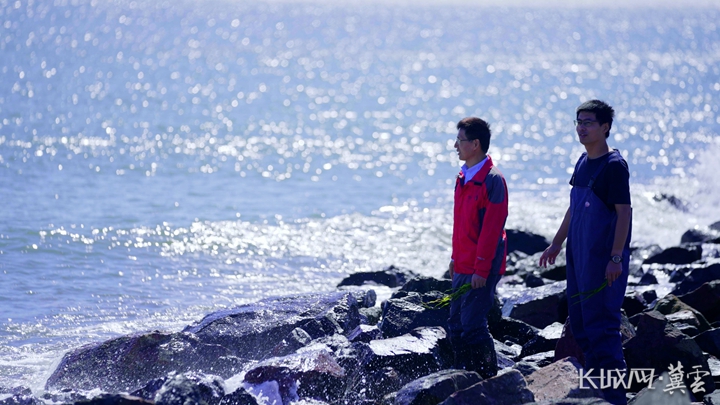
中国科学院海洋研究所研究员周毅(左一)望着修复后的海域,满是欣慰。长城网·冀云客户端记者 乔娅 摄
Zhou Yi (Left) a research fellow of the Institute of Oceanology, Chinese Academy of Sciences (Left) is full of joy to see the sea area that has been restored. (Photo by Qiao Ya/Great Wall New Media)
“很多人以为海草就是海里面的杂草或海藻,其实海草是一种能在海底开花的神奇植物。海草床与红树林、珊瑚礁被并称为三大典型近海生态系统,是健康海洋环境的重要标志,有‘海底草原’‘海底森林’之称。”近年来,周毅一直致力于海草床生态修复的研究与实践,在他看来,海草床一旦遭到破坏,很难自然恢复到健康状态,需要进行人工生态修复。
"Many people mistake seagrass for seaweeds or algae. In fact, seagrass is the only flowering plant able to live in seawater and pollinate while submerged. Together with mangrove forests and color coral reefs, they form three major typical offshore ecological systems, reputed as a 'submarine meadow' or 'submarine forest', which is an important hallmark of a healthy oceanic environment." said Zhou Yi, who has been studying and practicing how to repair the seagrass bed ecosystem in recent years.
He said that once the seagrass bed is destroyed, it is hard to restore to its original state and artificial means has to be employed.
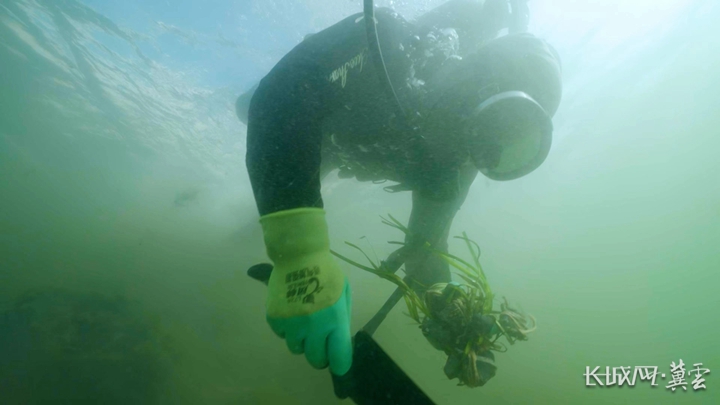
修复团队在人工培育的海草根茎上绑上石头于海底,来进行海草床的修复重建。中国科学院海洋研究所供图
The ecosystem repair team fix the artificially bred seagrass rhizomes, also called creeping rootstalk, horizontal underground plant stem capable of producing the shoot and root systems of a new plant, onto a stone and sink it to the seabed in a bid to build new seagrass beds. (Photo provided by the Institute of Oceanology, Chinese Academy of Sciences)
巧合的是,唐山渤海海域泥沙底质、水流较缓、地势平坦,是适宜海草修复的极佳生境。在周毅团队的指导下,从2017年开始,唐山海洋牧场公司启动了海草床修复项目,首期选定了60公顷修复试验区,采用植株移植法和种子种植法重建海草床。
Coincidentally, the seabed in the Tangshan section of the Bohai Sea is sand-muddy, the water current is slow, and the subterranean ground is flat, providing the best niche for repairing the seagrass beds. In 2017, the Tangshan Aquafarm Industrial Co. Ltd. started the repair project under the guidance by Zhou Yi's team. The company selected a 60-hectare area for experiment, where they choose two methods of building the new seagrass bed: rhizomes transplanting and seagrass seed sowing.
移植法是在海草根茎上绑石移植,易于将海草固定于海底,成活率达95%以上;种植法是用海草种子裹上泥土栽种,优点是可以增加海草的遗传多样性。几年来,周毅带领团队不断研发筛选适于当地海草床生态修复的最优方案。
The rhizomes transplanting made it easy to sink rhizomes to the bottom and the survival rate has reached over 95 percent. The seed sowing method is to plant the seeds wrapped in mud. It has the advantage of increasing the genetic diversity.
对于海草床的生态价值,周毅有一个形象的比喻:海草床像一个巨大的“社区”,鱼类、海龟、虾蟹等各种海洋动物栖居其间、繁衍生息。半个足球场大的海草床,就能容纳4万条鱼和5000万只小型无脊椎动物。
Zhou Yi compares a seagrass bed to a huge "community", in which all kinds of fish, turtles, shrimps and crabs and other marine animals live and multiply. A half-football-field seagrass bed is able to accommodate 40,000 fish and 50 million small invertebrates.
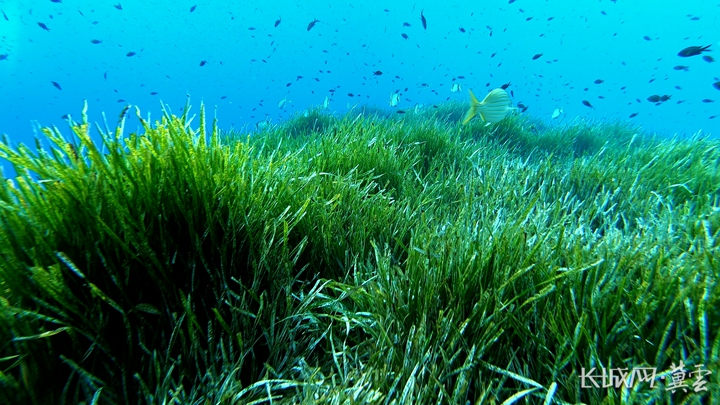
修复后的海草床为各种海洋动物提供栖居环境和食物来源。中国科学院海洋研究所供图
The repaired seagrass bed provides all kinds of marine animals with habitats and food. (Photo provided by the Institute of Oceanology, Chinese Academy of Sciences)
“海草床的固碳能力很强,虽然海草床只覆盖了0.2%的海底面积,却存储了全球每年10%—18%的海洋碳,是极其重要的‘蓝色碳汇’。”周毅感慨地说,不仅如此,海草床还可以净化海水水质,减缓海浪冲击,防护海岸线。
"The seagrass bed has a strong capacity of capturing and storing carbon. Although it covers only 0.2 percent of the sea bottom, it has captured and stored 10%-18% of global marine carbon a year, an extremely important blue carbon sink," said Zhou, adding that it can also purify sea water and cushion the attack by sea waves to protect the coastlines.
9月24日清晨,太阳刚跃出海平面,张振海与周毅就乘船驶向海草床修复试验区。“快看,潮退了,潮间滩地上种植的海草露出来啦!”周毅告诉我们,海草喜凉,这个季节正适合移植。早上正是低潮期,穿上叉裤,在潮间滩地上就可以移植海草;如果赶上涨潮期,则需要潜水进行移植。
On the morning of September 24, when the sun just jumped out of the horizon, Zhang Zhenhai and Zhou Yi set off by boat for the seagrass bed repair experimental area. "Look, quick, the tide is ebbing, and the seagrass planted on the tidal flats are showing up," said Zhou, adding that such season is quite suitable for transplanting rhizomes as it is a cool plant.
"We can transplant it by wearing the shorts as it is a low ebb in the morning. On the tidal flats, we can also transplant rhizomes. But during the high tide period, we have to dive in to transplant them." said Zhou.
海面之下,海草舒展身姿,随波摇曳。“在这片海域,通过海草床修复和贝藻礁重建,海洋生物量比以前提高40倍以上。下一步我们还要扩大修复试验区面积,争取再多修复400公顷。”张振海言语中透露出初见成效后的喜悦。
"Under the sea water, the seagrasses are undulating with the waves. In this area, with the repair and rebuilding of seagrass bed and algal reefs, the marine biomass has increased by more than 40 times. In the next step, we will expand the experimental area to 400 more hectares," said Zhang Zhenhai, unable to hold back his joy over the initial success.
“经过五六年的修复,海草床已经非常茂盛,一个生机勃勃的海底新绿洲就在我们眼前。”周毅兴奋地说,“海底草原”重新构建起来后,海鲈鱼、海马、贝类等众多的海洋生物,又回到了它们熟悉的家园,渤海这片港湾再次成为各类海洋生物繁衍生息的乐园。
"After five or six years, the seagrass bed has already become proliferating. A vigorous seabed and new oasis on the sea bottom has appeared before us," said Zhou excitedly. "After the marine meadow is rebuilt, such marine organisms as sea bass, sea horse, shellfish will return to their familiar homeland and this part of the Bohai Sea will again become a paradise for various marine creatures to live and multiply."
Editor: Song Lifang


